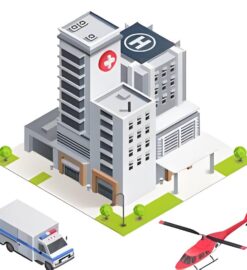How can we help a person with muscular dysmorphia?

Currently, and increasingly, there is an increase in the population’s awareness of the importance of following a balanced diet and regular physical exercise. However, when this practice goes beyond the recommended limits and is accompanied by excessive concern for the body, it can trigger what is commonly defined as vigorexia, a disease known as muscle dysmorphia.
The director of the Socio-addiction Care and Research Center (AIS), Vega González-Bueso, talks about the reasons that can trigger this obsession with physical appearance: “social pressure would be one of the triggers for some people to develop an obsession with the cult of the body. The media transmit the model of the athletic and muscular man as a prototype of health and success so that an immature, insecure person, etc., can try to compensate for these personal characteristics with an image that, socially, has been transmitted as a synonym of triumph”.
Vigorexia negatively affects the personal relationships of those affected and their mental and physical health.
Although vigorexia is indeed an alteration that, until now, has occurred more in men than in women, with an average age between 18 and 35 years, in recent times, there has been an increase in the presence of the disorder in the female sector. People more likely to suffer from it are characterised by having a certain psychological prototype: low self-esteem, immaturity, insecurity, distorted and deformed perception of their body image, etc.
To detect a case of vigorexia: “one of the indicators to pay attention to is food. The person who suffers, or begins to present worrying characteristics, will make changes in their diet, consuming a lot of carbohydrates and proteins and, in most cases, will consume anabolics and steroids. Another indicator is their obsessive dedication to their body and cares for the gym”.
health consequences
Vigorexia can have serious physical and psychological consequences. In the mental aspect, the person can suffer a distortion of his body image, so he will never see himself as muscular enough, with the consequent risk of suffering muscle injuries. At a social level, relationships will be diminished because the subject spends most of the time in the gym. On the other hand, patients with muscular dysmorphia usually make drastic changes in their diet and ingest large amounts of anabolic steroids and steroids, whose objective is to achieve a muscular body as quickly as possible. High-protein foods can also be harmful to health.
How can one help a person with muscular dysmorphia?
First, vigorexia must be treated with great care and with the advice of the corresponding specialists. For example, suppose a family member or friend is suspected of suffering from vigorexia. In that case, expressing their concern and convincing the patient to consult an expert is advisable.
“family and friends play a very important role in the treatment and recovery of this addiction. They must provide effective support to the patient and help him carry out the guidelines indicated by the health professional. In addition, it is convenient to be offered alternatives such as going to the movies or travelling. Options that prevent you from going to the gym uncontrolled”.
From an early age, families must try to promote healthy lifestyles, instilling the importance of physical exercise, although always with limits, and following a balanced diet.
Another key point for prevention is to avoid the start of certain behaviours, such as doing physical exercise in the face of symptoms of excessive fatigue or muscle pain, as well as overexertion or performing exercises that are not suited to individual abilities. These must also be done with the supervision of a personal trainer.
Use of anabolic steroids
Many people with vigorexia begin to consume substances such as hormones and anabolic steroids to stimulate muscle development, with the risks that this entails.
Anabolic steroids administration is quite common among those suffering from muscle dysmorphia.
The use of anabolic steroids is another consequence associated with vigorexia, aiming to improve physical performance and increase the volume of your muscles.
With the use of these substances, no benefit is obtained. Quite the opposite, since they produce many disorders in the body, such as masculinisation and irregularities of the menstrual cycle in women, acne, testicular atrophy, and decreased sperm formation and retention of liquids, among others.
“They can also cause kidney and liver failure; they also significantly increase the risk of heart attack and stroke.
It is important to note that these drugs do not increase muscular strength, agility, or endurance.
Close attention should be paid to pain because it is an alarm signal of the possible consequences of overtraining.



